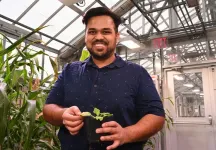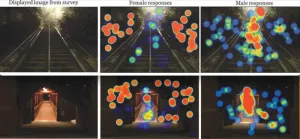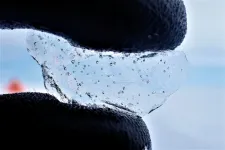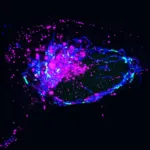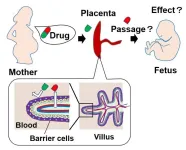(Press-News.org) In a study that signals potential reproductive and health complications in humans, now and for future generations, researchers from McGill University, the University of Pretoria, Université Laval, Aarhus University, and the University of Copenhagen, have concluded that fathers exposed to environmental toxins, notably DDT, may produce sperm with health consequences for their children.
The decade-long research project examined the impact of DDT on the sperm epigenome of South African Vhavenda and Greenlandic Inuit men, some of whom live in Canada’s North.
The study, published in the journal Environmental Health Perspectives, demonstrates a link between long-term exposure to DDT and changes in the sperm epigenome. These changes, particularly in genes vital for fertility, embryo development, neurodevelopment, and hormone regulation, correspond to increased rates of birth defects and diseases, including neurodevelopmental and metabolic disorders.
“We identified regions of the sperm epigenome that are associated with the serum levels of DDE (chemicals that form when DDT breaks down) and this association follows a dose-response trend. I think that's quite striking, in that the more DDE you’re exposed to, the higher the chromatin, or DNA methylation defects are in the sperm,” said Ariane Lismer, PhD, the study’s lead author, who completed the work while pursuing her PhD at McGill’s Department of Pharmacology and Therapeutics.
“We demonstrate the sperm epigenome’s response to toxin exposures may be linked with disease in the next generation,” said Sarah Kimmins, PhD, who led the research as Professor of Pharmacology and Therapeutics at McGill and is also now a professor in the Department of Pathology and Cell Biology at Université de Montréal. “This is a critical new step for the field because while there are many studies of animals demonstrating toxin effects on the sperm epigenome, studies in humans have not comprehensively demonstrated this.”
Malaria, climate change, and the ‘grasshopper effect’
Despite a global ban on DDT to protect humans and the environment from its effects, the South African government has special permission to use it as an insecticide to control malaria. In some areas, home interiors are coated with the toxin. The study’s findings underscore the urgency to find alternative ways to control malaria and other vector-borne diseases.
“The reality is that people, especially young children and pregnant women, are still dying from malaria. We cannot afford for people in malaria-endemic regions to refuse spraying of their houses, as it will increase their risk of getting malaria,” says Tiaan de Jager, PhD, Dean of the Faculty of Health Sciences and Professor in Environmental Health at the School of Health Systems and Public Health at the University of Pretoria.
What’s more, the number of people and animals exposed to DDT is reportedly increasing due to climate change. DDT can travel vast distances through what is known as the 'grasshopper effect,' evaporating with warm air and returning to Earth with rain and snow in colder regions, where it persists in the Arctic food chain.
Rethinking fathers’ role in child development
The findings also highlight the importance of considering fathers in discussions about child health and development. While it's commonly understood that women should avoid exposure to environmental contaminants during pregnancy, less attention has been given to how toxins affect fathers.
“We tend to think all fathers have to do is fertilize. But in fact, we forget that half of that genome and epigenome comes from the fathers, and half of it comes from the mothers. What that epigenome does in embryo development is critical for normal development,” says study co-author, Janice Bailey, PhD, formerly Professor of Animal Sciences at Université Laval and now the Scientific Director at Fonds de Recherche du Québec en Nature et Technologies (FRQNT).
Although the study focuses on DDT exposures, the researchers say it is not a leap to suggest that exposures to more common household endocrine disruptors such as those found in cosmetics and personal care items may act similarly.
END
Are environmental toxins putting future generations at risk?
Exposure to DDT can trigger changes to the heritable sperm epigenome and may raise risk of birth defects and disease, finds McGill-led study
2024-02-08
ELSE PRESS RELEASES FROM THIS DATE:
Protecting the protector boosts plant oil content
2024-02-08
UPTON, NY—Biologists at the U.S. Department of Energy’s (DOE) Brookhaven National Laboratory have demonstrated a new way to boost the oil content of plant leaves and seeds. As described in the journal New Phytologist, the scientists identified and successfully altered key portions of a protein that protects newly synthesized oil droplets. The genetic alterations essentially protect the oil-protector protein so more oil can accumulate.
“Implementing this strategy in bioenergy or oil crop plants could ...
Physical activity is insufficient to counter cardiovascular risk associated with sugar-sweetened beverage consumption
2024-02-08
Québec, February 8, 2024 - Contrary to popular belief, the benefits of physical activity do not outweigh the risks of cardiovascular disease associated with drinking sugar-sweetened beverages, according to a new study led by Harvard T. H. Chan School of Public Health. Jean-Philippe Drouin-Chartier, professor at Université Laval’s Faculty of Pharmacy, was a co-author.
Sugar-sweetened beverages are the largest source of added sugars in the North American diet. Their consumption is associated with ...
CARB-X funds Visby Medical to develop a portable rapid diagnostic for gonorrhea including antibiotic susceptibility
2024-02-08
(BOSTON: Thursday, February 8, 2024) – Combating Antibiotic-Resistant Bacteria Biopharmaceutical Accelerator (CARB-X) will award up to US$1.8 million to biotechnology company, Visby Medical, to develop a portable rapid polymerase chain reaction (PCR) diagnostic to detect the presence of the pathogen that causes gonorrhea, Neisseria gonorrhoeae (NG), and its susceptibility to ciprofloxacin, a former frontline oral antibiotic that can no longer treat resistant NG. A rapid result on when ciprofloxacin may be effective could enable physicians to treat gonorrhea patients with confidence, while reserving ceftriaxone, the only antibiotic that remains effective against resistant NG.
Visby ...
Fusion research facility JET’s final tritium experiments yield new energy record
2024-02-08
GARCHING and OXFORD (8 February 2024) –
The Joint European Torus (JET), one of the world’s largest and most powerful fusion machines, has demonstrated the ability to reliably generate fusion energy, whilst simultaneously setting a world-record in energy output.
These notable accomplishments represent a significant milestone in the field of fusion science and engineering.
In JET's final deuterium-tritium experiments (DTE3), high fusion power was consistently produced for 5 seconds, resulting in a ground-breaking record of 69 megajoules using a mere 0.2 milligrams of fuel.
JET is a tokamak, a design which uses powerful ...
A new “metal swap” method for creating lateral heterostructures of 2D materials
2024-02-08
Electronically conducting two-dimensional (2D) materials are currently hot topics of research in both physics and chemistry owing to their unique properties that have the potential to open up new avenues in science and technology. Moreover, the combination of different 2D materials, called heterostructures, expands the diversity of their electrical, photochemical, and magnetic properties. This can lead to innovative electronic devices not achievable with a single material alone.
Heterostructures can be fabricated in two ways: vertically, with materials ...
Study visually captures a hard truth: Walking home at night is not the same for women
2024-02-08
An eye-catching new study shows just how different the experience of walking home at night is for women versus men.
The study, led by Brigham Young University public health professor Robbie Chaney, provides clear visual evidence of the constant environmental scanning women conduct as they walk in the dark, a safety consideration the study shows is unique to their experience.
Chaney and co-authors Alyssa Baer and Ida Tovar showed pictures of campus areas at four Utah universities — Utah Valley University, ...
Ice cores provide first documentation of rapid Antarctic ice loss in the past
2024-02-08
Researchers from the University of Cambridge and the British Antarctic Survey have uncovered the first direct evidence that the West Antarctic Ice Sheet shrunk suddenly and dramatically at the end of the Last Ice Age, around eight thousand years ago.
The evidence, contained within an ice core, shows that in one location the ice sheet thinned by 450 metres — that’s more than the height of the Empire State Building — in just under 200 years.
This is the first evidence anywhere in Antarctica for such a fast loss of ice. Scientists are worried that today’s rising temperatures ...
Faulty DNA disposal system causes inflammation
2024-02-08
LA JOLLA (February 8, 2024)—Cells in the human body contain power-generating mitochondria, each with their own mtDNA—a unique set of genetic instructions entirely separate from the cell’s nuclear DNA that mitochondria use to create life-giving energy. When mtDNA remains where it belongs (inside of mitochondria), it sustains both mitochondrial and cellular health—but when it goes where it doesn’t belong, it can initiate an immune response that promotes inflammation.
Now, Salk scientists ...
Breaking through barriers
2024-02-08
Researchers from Tokyo Medical and Dental University (TMDU) overcome scientific roadblocks and develop a model to assess the biology of the human placental barrier
Tokyo, Japan – During pregnancy, the human placenta plays multiple essential roles, including hormone production and nutrient/waste processing. It also serves as a barrier to protect the developing fetus from external toxic substances. However, the placental barrier can still be breached by certain drugs. In a recent article published in Nature Communications, a team led by researchers ...
Patterns of brain connectivity differ between pre-term and term babies
2024-02-08
Under strict embargo until 10.00 GMT Thursday 8 February 2024
A new King’s College London scanning study of 390 babies has shown distinct patterns between term and pre-term babies in the moment-to-moment activity and connectivity of brain networks.
Supported by Wellcome and the National institute of Health and Care Research (NIHR) Maudsley Biomedical Research Centre, this is the first study to analyse how the communication between brain areas changes moment-to-moment in the first few weeks of life.
Published in Nature Communications, the study also found that these dynamic ...
LAST 30 PRESS RELEASES:
Why nail-biting, procrastination and other self-sabotaging behaviors are rooted in survival instincts
Regional variations in mechanical properties of porcine leptomeninges
Artificial empathy in therapy and healthcare: advancements in interpersonal interaction technologies
Why some brains switch gears more efficiently than others
UVA’s Jundong Li wins ICDM’S 2025 Tao Li Award for data mining, machine learning
UVA’s low-power, high-performance computer power player Mircea Stan earns National Academy of Inventors fellowship
Not playing by the rules: USU researcher explores filamentous algae dynamics in rivers
Do our body clocks influence our risk of dementia?
Anthropologists offer new evidence of bipedalism in long-debated fossil discovery
Safer receipt paper from wood
Dosage-sensitive genes suggest no whole-genome duplications in ancestral angiosperm
First ancient human herpesvirus genomes document their deep history with humans
Why Some Bacteria Survive Antibiotics and How to Stop Them - New study reveals that bacteria can survive antibiotic treatment through two fundamentally different “shutdown modes”
UCLA study links scar healing to dangerous placenta condition
CHANGE-seq-BE finds off-target changes in the genome from base editors
The Journal of Nuclear Medicine Ahead-of-Print Tip Sheet: January 2, 2026
Delayed or absent first dose of measles, mumps, and rubella vaccination
Trends in US preterm birth rates by household income and race and ethnicity
Study identifies potential biomarker linked to progression and brain inflammation in multiple sclerosis
Many mothers in Norway do not show up for postnatal check-ups
Researchers want to find out why quick clay is so unstable
Superradiant spins show teamwork at the quantum scale
Cleveland Clinic Research links tumor bacteria to immunotherapy resistance in head and neck cancer
First Editorial of 2026: Resisting AI slop
Joint ground- and space-based observations reveal Saturn-mass rogue planet
Inheritable genetic variant offers protection against blood cancer risk and progression
Pigs settled Pacific islands alongside early human voyagers
A Coral reef’s daily pulse reshapes microbes in surrounding waters
EAST Tokamak experiments exceed plasma density limit, offering new approach to fusion ignition
Groundbreaking discovery reveals Africa’s oldest cremation pyre and complex ritual practices
[Press-News.org] Are environmental toxins putting future generations at risk?Exposure to DDT can trigger changes to the heritable sperm epigenome and may raise risk of birth defects and disease, finds McGill-led study
